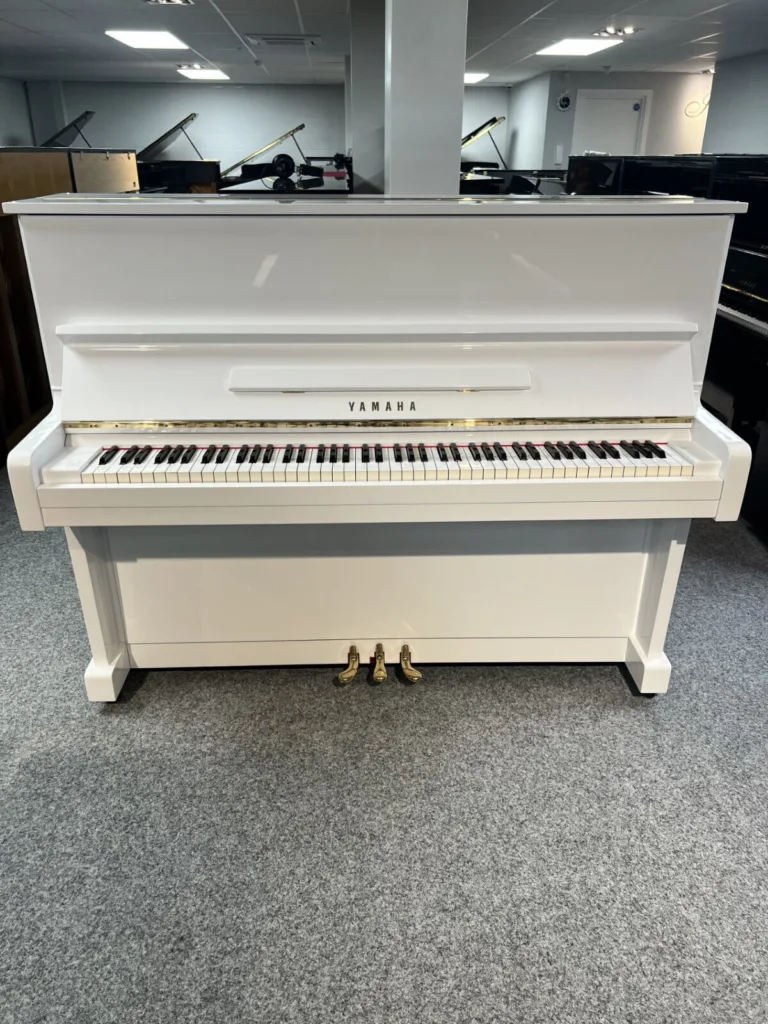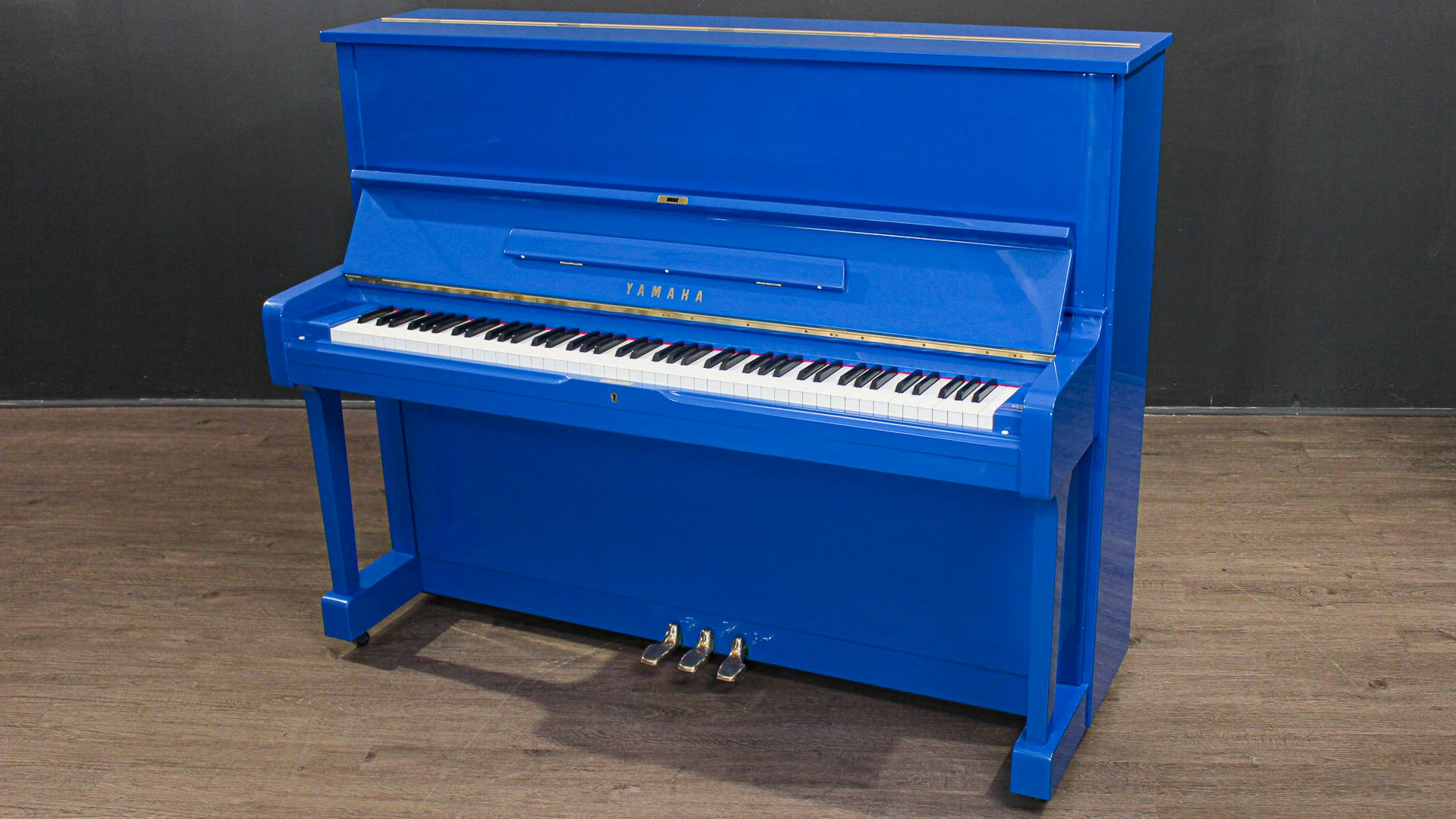Why do upright pianos sound different? Have you ever wondered why an upright piano produces a unique sound compared to other types of pianos? As a musician and piano enthusiast, I’ve always been fascinated by the science behind it. And in this article, I’ll share with you my knowledge and expertise on the subject.
From the way they are designed to how they produce sound, there are several key factors that contribute to why upright pianos have a distinct tone. We’ll explore these factors in detail, including the differences between upright and grand pianos, as well as how various parts of an upright piano affect its sound.
So whether you’re a curious music lover or considering purchasing an upright piano for your home, this article is for you. Let’s dig into the fascinating world of piano acoustics and discover why upright pianos sound different!
So, Why do upright pianos sound different?
Upright pianos have a distinct sound that sets them apart from grand pianos. This is due to the way they are designed and constructed, as well as the materials used in their production.
One of the main differences between upright and grand pianos is their size and shape. Upright pianos are taller and more compact, with strings that run vertically instead of horizontally like in a grand piano. This vertical design affects how the strings vibrate when struck by hammers, resulting in a different sound.
Another factor that contributes to the unique sound of an upright piano is its backboard or sounding board. This wooden panel amplifies the vibrations produced by the strings, creating a fuller and richer tone compared to other string instruments like guitars.
The placement of keys also plays a role in how an upright piano sounds. Due to their vertical design, upright pianos require less force on the keys for them to produce sound compared to grand pianos which have longer key levers. This results in a softer touch and slightly muted tones from an upright piano.
Additionally, many modern upright pianos use different types of wood for their construction compared to traditional grand pianos. These variations can affect resonance and tonal qualities, making each instrument unique in its own way.
In summary, there are several factors at play when it comes to why upright pianos sound different than other types of acoustic instruments. From their design and construction materials to key placement and string vibration patterns – all contribute to producing that distinctive rich sound we associate with this beloved musical instrument.
The Structural Differences Between Upright and Grand Pianos
When you first lay eyes on an upright piano, it’s easy to see how its vertical design saves space. Upright pianos have strings and soundboards that are vertically aligned, which means they can fit neatly against a wall. This setup makes them ideal for homes or smaller venues where room is limited. The hammers in an upright move horizontally when struck, hitting the strings from the side rather than underneath as in grand pianos. Because of this configuration, the action (the mechanism that moves the hammer) tends to be less responsive compared to grands.
On the other hand, grand pianos flaunt a horizontal layout with their strings and soundboard lying flat beneath the lid. Grand’s hammers strike upward onto strings stretched over a larger area. Due to this expansive design:
– Sound quality is richer and more resonant.
– Action response feels quicker and lighter.
Grand pianos often boast longer keys providing better control for nuanced playing—ideal for concert performances or advanced pianists seeking expressive dynamics. Even though they occupy significant floor space, their majestic appearance and superior acoustics make them prized possessions in spacious homes or professional settings.
Understanding the Acoustic Principles of an Upright Piano
When you first sit down at an upright piano, you might be amazed by the rich and resonant sounds that emerge. This magic happens because of some fascinating acoustic principles at play. Inside an upright piano, there’s a complex interplay between strings, hammers, and a wooden soundboard. Each key is connected to its own hammer which strikes a string or set of strings. When these hammers hit the tightly wound steel strings, they create vibrations that travel through the instrument.
The real secret lies in how these vibrations are amplified by the soundboard. Acting like a giant speaker, this large wooden board takes those tiny string oscillations and turns them into robust waves of sound.
This process is similar to how your voice resonates when singing in the shower; enclosed spaces enhance sounds. The arrangement of strings also plays a critical role:
- Lower notes have longer and thicker strings
- Higher notes use shorter and thinner ones
These variations allow for different frequencies to be produced across the keyboard’s range.
Moreover, let’s not forget about the pedals !The sustain pedal lifts all dampers off the strings, letting notes ring out longer while soft pedals mute creating softer tones.
Understanding this helps us appreciate why each note can evoke such deep emotions from just a press of our fingertips on ivory keys.
Read also: kawai es 520
Key Components of an Upright Piano That Influence Its Sound
The magic behind the elegant sound of an upright piano lies in its intricate components working harmoniously. The strings are perhaps one of the most crucial parts, stretched tightly and varied in length to produce different pitches when struck by the hammers. Each string resonates within a specially designed wooden frame, which helps amplify the sound. The quality of these strings – their material and tension – heavily influences whether the notes come out clear or muddled.
Another vital element is the soundboard. This large, flat piece of wood sits just beneath the strings and acts as a natural amplifier for vibrations. It’s typically made from spruce due to its excellent resonant properties. When you press a key, it sets off a chain reaction that ultimately makes this soundboard vibrate, producing rich tones that can fill an entire room. Additionally, we can’t overlook how important the action mechanism is; it’s all those little moving parts connecting your fingers’ movements on keys to hammers striking strings precisely and consistently.
Other details like dampers, felt-covered pieces that stop string vibrations when keys are released also play significant roles. They ensure each note stops cleanly without lingering dissonance unless you’re holding down a sustain pedal intentionally allowing chords to blend beautifully together.
In essence:
- Strings provide pitch.
- The soundboard amplifies vibrations.
- The action mechanism connects keystrokes to hammer strikes.
Together they create what we recognize as music’s heart-stirring resonance!

Exploring How Different Materials Impact the Tone of an Upright Piano
The tone of an upright piano is a beautiful symphony of different elements coming together. One significant factor is the material used for the soundboard. This large wooden plate, often crafted from spruce, acts like a huge speaker that amplifies the vibrations from the strings. Spruce is favored for its ability to resonate freely and produce clear, vibrant sounds. However, some pianos use alternative woods or even synthetic materials which can alter this resonance. The subtle differences in density and flexibility between these materials shape the richness and warmth of each note.
Another crucial component influencing an upright piano’s timbre is the quality and type of hammers striking the strings. Traditional felt hammers offer a balanced blend of softness and firmness, giving notes their full-bodied character without harshness. Over time, though, felt wears down and hardens causing changes in tonal quality—often becoming brighter or more percussive.
Some manufacturers experiment with hybrid materials or reinforced felts to prolong hammer life while maintaining consistency in sound production.
This meticulous attention to detail ensures each keystroke delivers not just music but also emotional experience.
So next time you hear an upright piano play, remember it’s not just about skillful fingers on keys; it’s also about what lies beneath those polished exteriors quietly crafting every melody into magic.
You may also like: yamaha starter guitar
Final thoughts: The Unique Resonance and Richness of Upright Pianos Explained.
Upright pianos possess a unique resonance and richness that set them apart from their grand counterparts. The upright piano’s vertical strings create a more compact instrument, making it ideal for smaller spaces without sacrificing much of the sound quality. When you press a key, the hammer strikes the string vertically, creating a bright yet warm tone that’s distinctively rich in overtones. This vertical action allows for quicker repetition of notes, adding to its expressive capabilities.
Moreover, upright pianos often come with beautifully designed wooden cabinets that not only protect the inner mechanics but also serve as stunning pieces of furniture. Their height varies—some are short and petite while others stand tall like sentinels—but they all share this elegant symmetry that pleases both eyes and ears. Whether you’re playing jazz or classical music, an upright piano delivers nuanced sounds that can fill any room with vibrant energy or serene calmness.
These instruments offer:
- A versatile range suitable for various musical genres
- An approachable size perfect for home settings
- Aesthetic beauty combined with functional design
So next time you sit at an upright piano, take a moment to appreciate its artistry—from how it emanates lush tones to how it adds charm to your living space!

